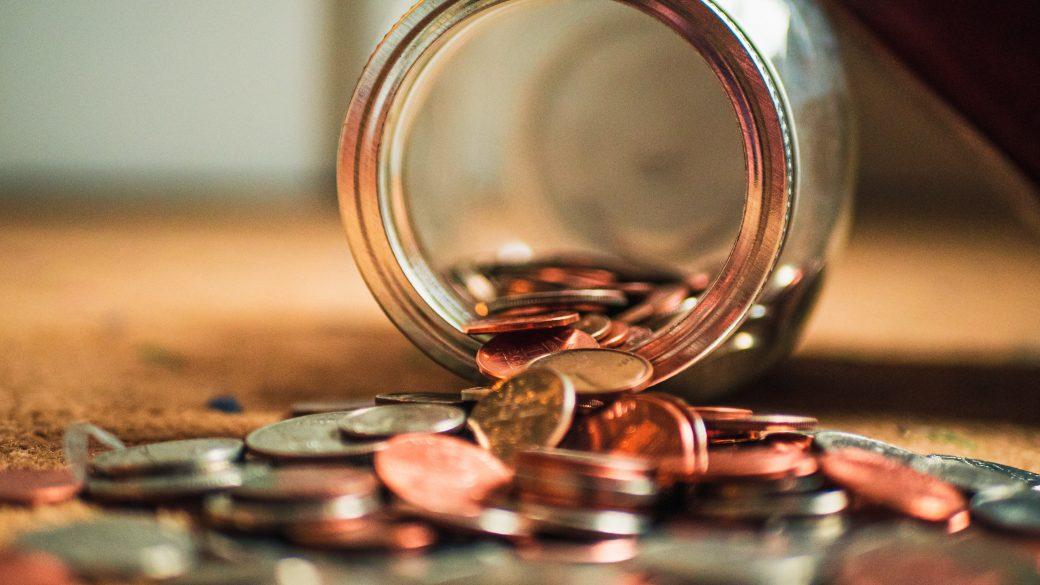New York Times Special Report | The Wish of Crypto Tycoon SBF: No Long Pants, Writing the Rules
Author: David Yaffe-Bellany, The New York Times
Original Title: "A Crypto Emperor's Vision: No Pants, His Rules"
Translated by: Guo Qianwen, Chain Catcher
In Nassau, the capital of the Bahamas—crypto entrepreneur Sam Bankman-Fried stands in a side hall of the Baha Mar Convention Center, still dressed casually in his usual shorts and T-shirt. He has built a $40 billion business in less than three years, gaining widespread fame. He is about to take the stage with Anthony Scaramucci, the former White House communications director who became well-known after losing his job in less than two weeks.
They are discussing other celebrities. A few days earlier, Bankman-Fried filmed a Twitter video with NFL quarterback Tom Brady. "Brady is awesome," Bankman-Fried said, "maybe one day we’ll buy a football team together." Mooch (Anthony Scaramucci) placed his hand on Bankman-Fried's shoulder like a father and said, "You couldn’t find a better choice." He nodded in agreement.
Next, the conversation turned to Orlando Bloom and Katy Perry, who had dinner with Bankman-Fried earlier that week. Bankman-Fried said, "Orlando is lovely," while a production assistant fiddled with his microphone. They first met at a Super Bowl weekend party in Los Angeles, "He started talking to me," and then it became awkward; you know you should recognize this person but don’t know who they are.
30-year-old Bankman-Fried is not hard to spot in a crowd. Blockchain enthusiasts call him SBF, and he always looks disheveled, sporting a curly black mop. He founded the cryptocurrency exchange FTX in 2019 and has become one of the wealthiest crypto entrepreneurs in the world. At the Baha Mar resort, Scaramucci took off his suit jacket and changed into a T-shirt and shorts to match his companion. As the lights dimmed, he and Bankman-Fried took the stage, performing a comedy skit at this international cryptocurrency conference: they wore matching outfits and did a half-scripted, half-improvised routine that Bankman-Fried called "The Hans Show Special Edition."
The audience cheered. It was late April, and Bankman-Fried was hosting the first Bahamas Cryptocurrency Conference, a showcase for FTX that vividly reflected his growing fame and influence. Wherever he went, entrepreneurs in the crypto space rushed to shake his hand, fist bump, or pat his back while pitching projects or handing him branded gift bags. One afternoon, Bankman-Fried hosted a panel with Tony Blair and Bill Clinton discussing blockchain technology and the war in Ukraine. He said, "I’m glad you all came to see me today," and the audience laughed.
The laughter faded. In the past few days, the so-called stablecoin TerraUSD had plummeted, sending the cryptocurrency market into a tailspin and accelerating a dramatic sell-off that caused the prices of Bitcoin and Ethereum, the two most valuable cryptocurrencies, to drop. At Baha Mar, Bankman-Fried was hosting a large party for the industry; over the past week, he tried to restore calm by posting a series of lengthy messages on Twitter about the market conditions.
SBF has been happy to embrace this dual role. For years, the cryptocurrency industry has been occupied by political dreamers, shameless fraudsters, and wealthy yacht owners. Bankman-Fried hopes to revitalize the still-chaotic world of digital assets. As a billionaire, he lives modestly and has pledged to donate all his wealth; according to Forbes, his current net worth is $21.2 billion. He is also gaining more control over political fundraising: he has a super PAC that recently donated more than $10 million to a Democratic congressional candidate who supports some of his key charitable initiatives.
In public, Bankman-Fried sometimes appears uncomfortable, either fidgeting with his feet or playing with a fidget spinner. But this awkwardness is part of his carefully crafted self-presentation. In countless tweets, interviews, and television appearances, he positions himself as a mad scientist and diplomat—a candid genius willing to embrace regulation of his newly created industry and bold enough to criticize its bad excesses.
Now, at a time when the risks of cryptocurrency trading are increasingly severe, Bankman-Fried is trying to leverage his fame to shape policy in Washington. He regularly travels from his headquarters in the Bahamas to Congress, meeting with regulators and testifying. If successful, he could become one of the most influential figures in a new era of technological experimentation—an experiment that supporters call web3, writing the rules for a series of high-risk investment products that are increasingly reshaping the internet, finance, and even the arts.
But his opponents claim that his advocacy is self-serving. Critics complain that his political donations are aimed at advancing his agenda, distorting the competitive landscape. Consumer advocates are wary of his charm offensive in Washington, believing that FTX exacerbates volatility in the cryptocurrency market, putting investors at risk.
FTX is a gateway to the world of cryptocurrency. Curious investors can click a button to turn dollars into Bitcoin, Dogecoin, or Ethereum. It’s as simple as buying paper towels from a store—except for one thing: in a constantly turbulent market, the value of digital assets can evaporate overnight, and this volatility has led to a collapse in cryptocurrency prices over the past month. In the U.S., cryptocurrency exchanges operate in a regulatory gray area. Whether tokens count as securities, commodities, or something entirely different remains unresolved. Bankman-Fried has been advocating for expanding the authority of the U.S. Commodity Futures Trading Commission within the regulatory framework, which is smaller and more lenient than the SEC and has historically been more supportive of the cryptocurrency industry.
FTX is headquartered in the Bahamas partly because 80% of its $1.1 billion in global revenue comes from trading instruments deemed illegal in the U.S. On the FTX platform, investors can borrow money to place huge bets on the future price movements of cryptocurrencies, potentially reaping massive rewards—or suffering catastrophic losses. Such high-risk trading is popular worldwide. Bankman-Fried is now urging the trading commission to allow this kind of leveraged betting in the U.S., which would set a desirable precedent for other cryptocurrency companies offering experimental products.
Even during this week’s market crash, Bankman-Fried was busy with this proposal. On Thursday, he attended a hearing of the House Agriculture Committee in Washington, defending FTX's trading proposal and discussing the importance of federal cryptocurrency regulation.
"This will be in the interest of many of us," he said. "This is what we want to be involved in."
Raised with a Utilitarian Education
Before making any form of business decision, Bankman-Fried weighs his options in a quantitative way. He often asks colleagues, "What’s the expected value (EV)?" and then assigns numbers to each possible outcome. A good outcome should have a positive EV; a bad outcome has a negative EV.
This pragmatic style traces back to his childhood in the Bay Area. Bankman-Fried's parents are professors at Stanford Law School, both of whom have studied utilitarianism—a moral framework that requires decisions to maximize happiness for the greatest number of people. Bankman-Fried's father, Joseph Bankman, said, "We would discuss these things at home."
As a young person raised discussing moral theories at the dinner table, Bankman-Fried is also a follower of Peter Singer. Peter Singer is a philosopher at Princeton University, widely regarded as the father of "effective altruism," a charitable approach where donors strategize to maximize the impact of their donations. While an undergraduate at MIT, Bankman-Fried once had lunch with Will MacAskill, a disciple of Singer and one of the founders of the Centre for Effective Altruism. MacAskill recalled that he seemed to express, "Oh, yes, I was raised as a utilitarian. But I didn’t know what you were talking about."
MacAskill introduced Bankman-Fried to an effective altruism approach known as "earning to give"—where altruists focus on developing profitable careers to earn as much as possible before giving back to society. Bankman-Fried was intrigued. After earning a degree in physics, he took a job at the high-frequency trading firm Jane Street and began donating half of his salary to charity.
After leaving Jane Street in 2017, Bankman-Fried founded the cryptocurrency trading firm Alameda Research. At that time, the industry was booming, with entrepreneurs launching new coins almost daily, and the government was eager to keep up with the new developments. Bankman-Fried said, "Everyone was talking about cryptocurrency; it was actually a space you could enter as an individual—you didn’t need to have a decade of experience at a big company." He rented office space in Berkeley, where more than 20 traders worked day and night.
Bankman-Fried essentially lived at the office; most nights, he slept on a beanbag chair next to his desk. Occasionally, he would swing by his apartment to take a shower and change into khaki shorts, jogging back to the office, which was the only exercise he had time for. His dedication inspired his colleagues but also left them puzzled. "We always had beds in the office. We would always turn the conference room into a bedroom," said Sam Trabucco, an early employee at Alameda, "but he never slept in a bed; he liked the beanbag chair."
When he founded the company, Bankman-Fried noticed a peculiar phenomenon in the cryptocurrency market: Bitcoin prices in Japan were about 10% higher than in the U.S., creating an opportunity for cross-border arbitrage. Alameda could buy Bitcoin in the U.S. and then sell it in Japan, pocketing the profits. This trading seemed simple but became complicated due to the financial sector's deep skepticism about digital assets, which were still seen as the domain of hackers and drug dealers.
A large number of cryptocurrency transfers to U.S. banks raised alarms, forcing Alameda to adapt. These young traders firmly believed that cryptocurrency was the future of money, but the tools they used to trade cryptocurrencies were clearly outdated. Nishad Singh, an early employee at Alameda and now the engineering director at FTX, recalled, "We would spend hours at the bank every day; it was like a fixed activity area near the office where we manually sent telegrams."
Despite the obstacles, the arbitrage business brought in $20 million in net income within just three weeks. But Bankman-Fried soon discovered other limitations in the company's trading strategy. He was disappointed with the infrastructure of existing cryptocurrency exchanges, as their operations were often terrible.
In 2018, Bankman-Fried flew to Macau for a cryptocurrency conference. It was the first time since Alameda's founding that he ventured more than a mile away from the Berkeley office. He traveled across Asia, meeting industry peers for the first time and beginning to envision new possibilities for business in a more favorable regulatory environment.
A few days after his arrival, he sent a Slack message to colleagues in California: the company would suffer projected losses of millions of dollars if it stayed in the U.S.
Creating an Air of Mystery
In the months following the conference, Bankman-Fried moved his quantitative trading team to Hong Kong. He eventually handed over control of Alameda to some of his long-time colleagues and began building a new exchange. The timing for FTX's launch was perfect: after a price crash, the cryptocurrency market turned to a boom. Bankman-Fried and his colleagues quickly became very wealthy. FTX processed hundreds of millions of dollars in trades daily, extracting 0.04% profit on most transactions. Renowned venture capital firms like Sequoia and SoftBank lined up to invest. FTX and its U.S. subsidiary are now valued at a combined $40 billion.
As the business grew, Bankman-Fried began to build his public persona, tweeting about his favorite video games and explaining cryptocurrency to the public on television. But he refused to present himself like a typical CNBC guest. Before his first television appearance, he was urged by his colleagues at Alameda and FTX, including Andy Croghan, to tidy up his image.
Croghan recalled, "I said, Sam, you need to cut your hair, man—it looks a bit ridiculous." He said, "I actually thought cutting my hair was a negative EV. I need people to think I look crazy; that’s important."
Croghan learned to accept this strategy. Bankman-Fried often napped on his beanbag chair during breaks in meetings. In FTX's Hong Kong office, Croghan would arrange high-profile visitors to meet with Bankman-Fried while he was still asleep, bringing them to a conference room where they could see the sleeping CEO. Eventually, Bankman-Fried would wake up, walk into the meeting, usually wearing shorts. Croghan said this was to cultivate an air of mystery. "Sam and I intentionally didn’t wear long pants to meetings. He really told me, 'I think the only time I’ll wear long pants is in Congress.'"
Bankman-Fried kept his promise. He testified at a congressional hearing in December wearing a dress shirt and long pants, with shoelaces tied in a peculiar triple knot. In April, he also dressed up for a meeting with newly appointed FTC commissioner Caroline Pham, where he discussed leveraged trading proposals. On Twitter, Ms. Pham posted a photo with Bankman-Fried, but deleted it after critics accused her of being too close to the industry. (Pham stated in a release that she posted the photo to enhance transparency and indicated that she pressured FTX on some aspects of the proposal, including protections for retail customers.)
Last year, Bankman-Fried moved FTX to the Bahamas because the Bahamian government had established a relatively friendly regulatory framework for the cryptocurrency industry. From his new base, Bankman-Fried could easily travel to Washington. Almost all major cryptocurrency companies have lobbyists in Washington, but it is unusual for a CEO like Bankman-Fried to be directly involved.
Brett Harrison, president of FTX U.S., said, "The company could hire a lobbying team in D.C. to go to congressional offices, but it’s far more productive or meaningful to have the actual people running the company do it. We’ve been warmly welcomed."
FTX's active lobbying in Washington has raised alarms among consumer advocates. The proposal to offer leveraged futures trading in the U.S. could be risky, especially in such a volatile market as cryptocurrency. Lee Reiners, a former Federal Reserve official now teaching at Duke Law School, said, "Frankly, people shouldn’t be participating in these. Most participants will be immature traders, and I don’t think this product is suitable for anyone."
Bankman-Fried insisted during an interview at his Bahamian resort that FTX's platform is safe. He said the company has equipped retail investors with protections and reduced the leverage available to traders. He stated, "We regularly discuss with all regulators, and if the regulators refuse to communicate, that would be quite strange."
The company’s promotion in Washington is just one aspect of Bankman-Fried's broader agenda. He has become an increasingly influential figure across the financial industry, recently purchasing a 7.6% stake in the stock trading platform Robinhood. Over the past two years, he has also had fruitful results in political fundraising. He donated $5.6 million to Joe Biden's presidential campaign, making him one of the largest Democratic donors in this cycle. He also funded a super PAC called "Protect Our Future," which has donated more than $10 million to Carrick Flynn, a candidate running for the Oregon House of Representatives. This active spending has drawn complaints in the state, with one of Flynn's competitors saying he is funded by "a tax-evading billionaire from the Bahamas." (Flynn did not respond; the primary is scheduled for Tuesday.)
Bankman-Fried said his donations are unrelated to cryptocurrency. He said he is interested in the race because Flynn supports projects he funds through charity, such as preparing for the next pandemic. Last year, Bankman-Fried donated $50 million to fund pandemic-related initiatives and AI research. He also supports efforts to mitigate climate change and other specific projects, such as "planetary governance" research focused on space. This year, he plans to donate up to $1 billion.
Bankman-Fried said, "The most important thing is to do things that have a long-term impact on the world because there are trillions of people who haven’t been born yet."
This charitable strategy has not been universally accepted, even among effective altruists. It was Singer's academic research that helped spark the formation of this movement; he said he has known Bankman-Fried for many years and described his charitable work as "great and exciting." But privately, Singer encourages him to address more of the world's pressing issues.
He said, "I urged him to donate to effective charities that help people in extreme poverty; I’m not sure I convinced him."
No Time for Feasting
During most of his time at Crypto Bahamas, Bankman-Fried was shuttling between his laptop and the conference stage. Even his mother, Barbara Fried, found it hard to have time alone with him. One afternoon, when she tried to get his attention, a young man in a polo shirt cornered Bankman-Fried, asking him to film a birthday video for a friend. Minutes later, he was backstage shaking hands with Tony Blair, engaging in awkward small talk about Brexit.
Unlike some cryptocurrency conferences, this one in the Bahamas was invite-only, attracting a large number of participants. As a side benefit of the party, FTX guests received discounts from a private jet company. On the bus heading to a seaside party, one attendee raved about his cryptocurrency yacht group—"Join us, and you’ll know it’s the most unique and inclusive club."
In places like Puerto Rico, cryptocurrency millionaires have flocked there to avoid taxes, driving up housing prices and angering long-term residents. But the political leadership in the Bahamas has welcomed FTX with open arms. Prime Minister Philip Davis delivered an enthusiastic speech on the first day of the conference, declaring that cryptocurrency entrepreneurs "are more daring to innovate and change than most people on Earth." Later, Davis said in an interview that he was surprised when Bankman-Fried came to his office in a suit. He recalled telling Bankman-Fried, "We hope you’ll be here."
Bankman-Fried missed most of the conference celebrations, but he did not forget his hosting duties. He dined with Blair and Clinton and rarely turned down a selfie. He also made time for Scaramucci, the chairman of SALT, the company that helped organize the conference.
SBF and Mooch's duet marked the conclusion of Crypto Bahamas. Back in the green room, FTX staff embraced each other and high-fived in celebration. Bankman-Fried was scrolling on his phone, stretching, running his hand through his hair, and then checking the time. The skit lasted about four minutes. He said, "I have a lot of emails to handle."
Outside, hundreds of cryptocurrency enthusiasts were leaving for the airport, and the conference center was gradually emptying. It was the calm before the storm. To leave the resort, guests had to pass through the Caribbean's largest casino, Baha Mar, where the slot machines were flashing brightly in the hall.










